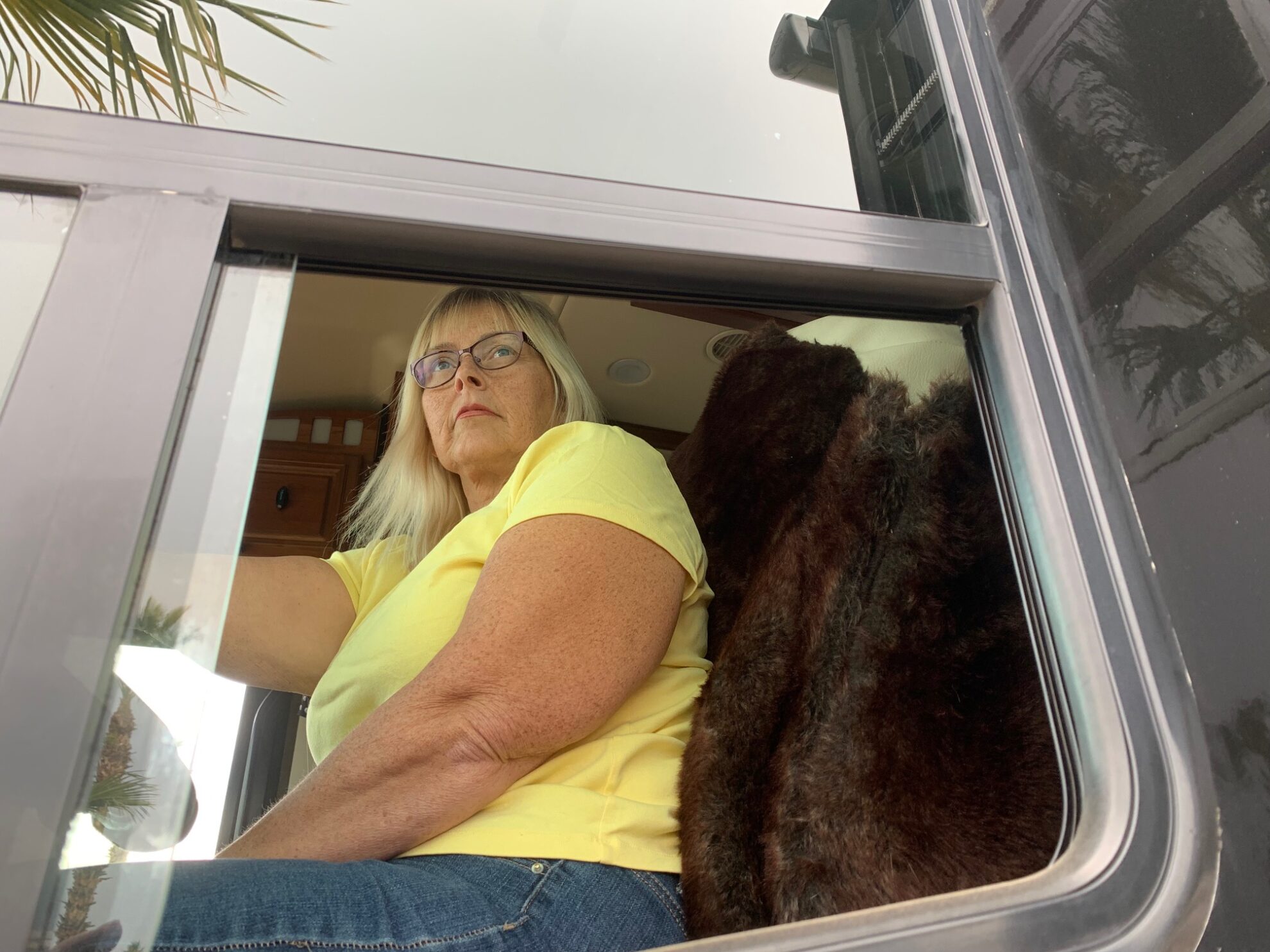Thanks for your support! If you make a purchase using our links in this article, we may make a commission. And, as an Amazon Associate, I earn from qualifying purchases. See the full disclosure here.
Which RV is the easiest to drive? If I were to survey RVers, I would guess the predominant answer would be a Class B. Class Bs drive similar to a normal vehicle because they are vans or are on a van chassis.
There are many factors, however, that make an RV easy or more difficult to drive. Some factors might include how much experience the driver has driving or towing. The length or weight of the RV might also come into play. Even the weather will make a difference in how easy an RV is to drive.
Even though you don’t technically “drive” a fifth wheel or travel trailer, the way they are handled on the road is still very important to your safety and others on the road. Read on to see what some of the driving pros and cons are of each type of RV.
Drivable RVs
Class A
Class A motorhomes are the Mac Daddy of the RV world. In general, they are luxurious homes on wheels. First, you will likely need to get over the intimidation factor of these types of RVs. It does take a certain amount of skill and knowledge to get around in Class A motorhomes.
Factors like stopping distance based on weight, managing blindspots, and height concerns are three important issues to be aware of when you drive a Class A.
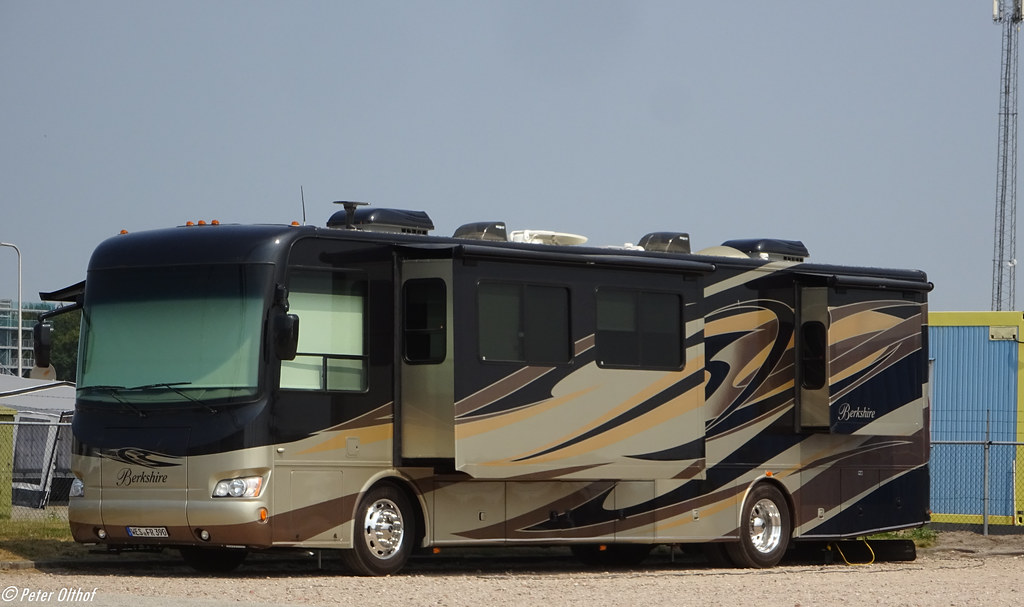
Class B
As I said earlier, Class B RVs should be the easiest of the drivables to get around in. They are small, lightweight, and easy to maneuver. They don’t have a lot of living space and most models will have smaller tanks.
You will probably have to put up your bed on a daily basis to do other tasks. Depending on your space needs, these campervans would be great to see the country. They are not the gas guzzlers like some of the larger models. They are easy to park and get around towns and cities.
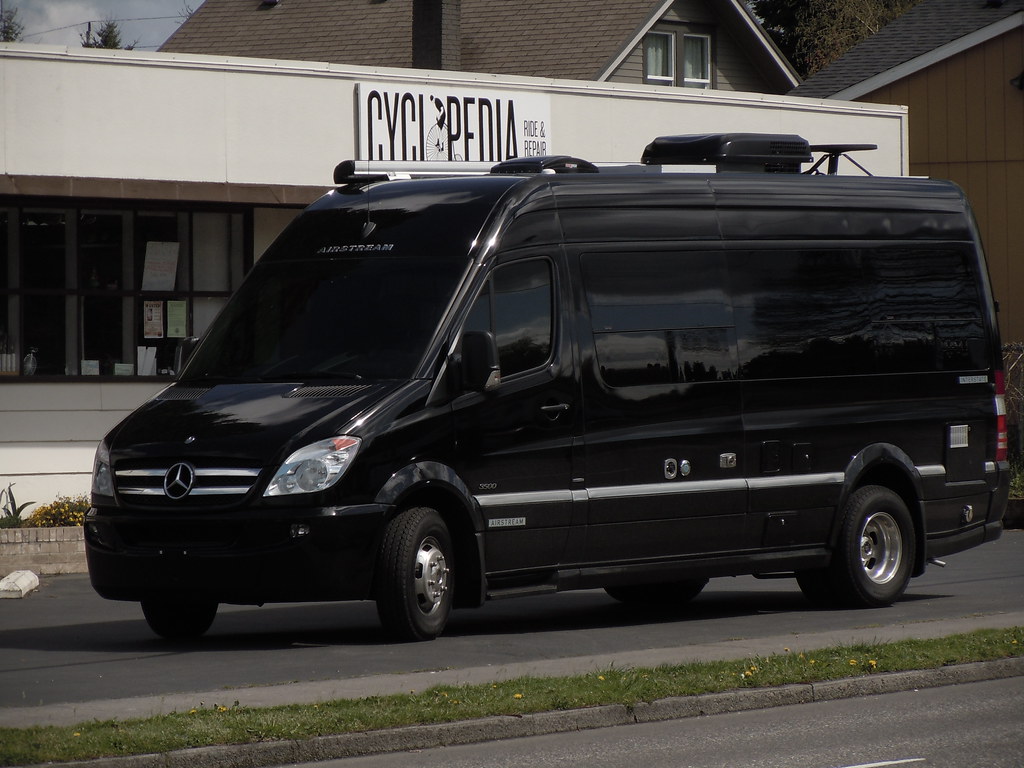
Class C
Class C RVs are usually built on a van or pickup truck chassis and are considered easy to drive. They generally fall in size somewhere between Class A and Class B motorhomes, depending on length, so they provide a good amount of space for a small family or couple.
Of course, like Class A motor coaches, you will need to take into account the length of your rig for blindspot monitoring, the height, and weight for stopping distance. Once you take a few test runs, you will likely find these are a great way to get around, since Class C’s are not as intimidating as larger rigs.
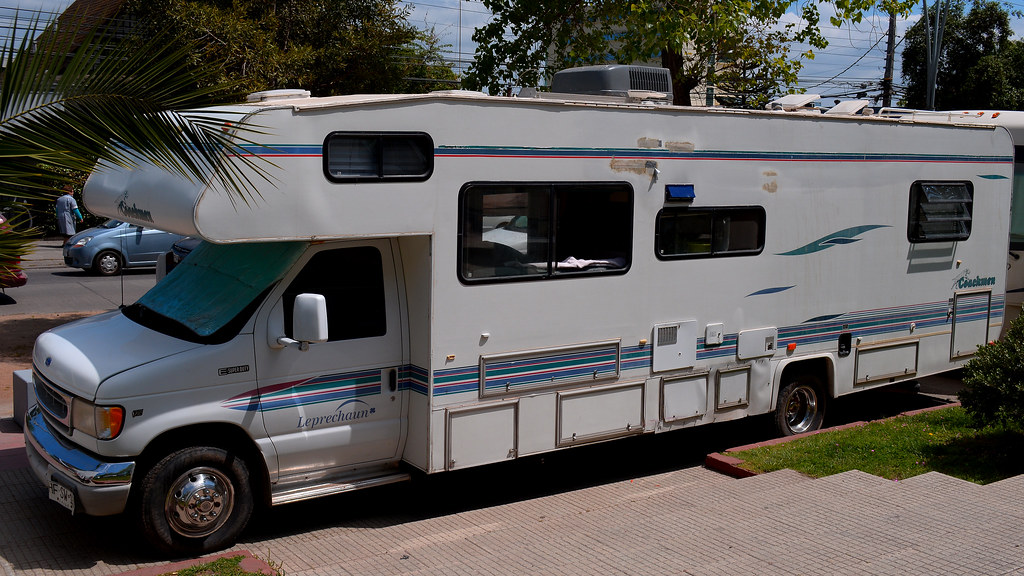
Towable RVs
Fifth Wheels
Some say a fifth wheel is the easiest towable RV to pull and possibly the safest. Because of the way they are hitched to the truck, the hitch is located in the center of the truck bed, they are easier to tow, have a smaller turn radius, and have less sway when being pulled than a travel trailer.
They generally come in lengths of 25-45 feet and will require a powerful pickup truck to tow. Towables in general are great RV options because you get a good amount of space in the RV and your price tag is probably going to be lower than a Class A motorhome.
You also have the advantage of already having a vehicle that you can use to do everything from driving to town to get groceries or head out on the back roads.
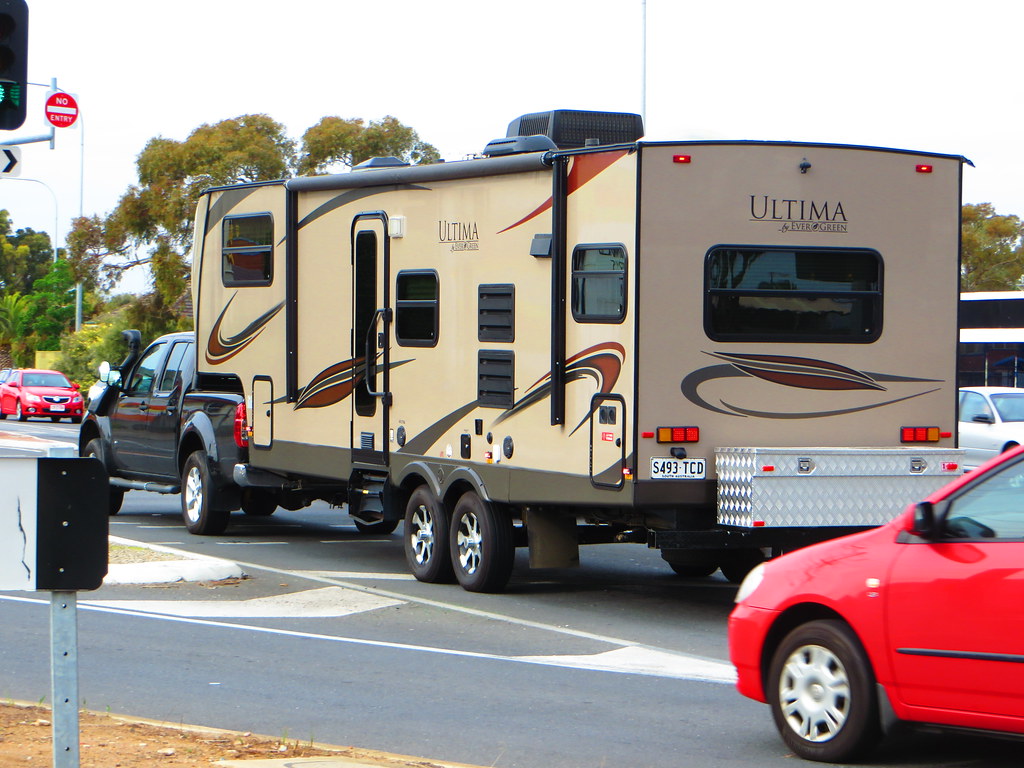
Travel Trailers
Travel trailers are usually in the range of 12-40 feet and are not difficult to tow. Many come in lightweight models, making them easy to drive with SUVs and other family-friendly tow vehicles. You will find the most creative floorplans in travel trailers that make the best use out of small spaces and use multifunctional RV furniture to add cargo and usable space.
Travel trailers have a larger turn radius than a fifth wheel and you must be careful not to make too tight of a turn and cause the truck and trailer to jackknife, particularly in parking situations. Of course, the shorter ones are going to be easier to drive than the longer ones.
Purchasing and using some form of sway bars will help cut down on sway with a trailer. You can feel the difference when a semi passes you if you have sway bars. You should also be aware of the height of your trailer and pull over if you encounter high winds or a questionable overpass.
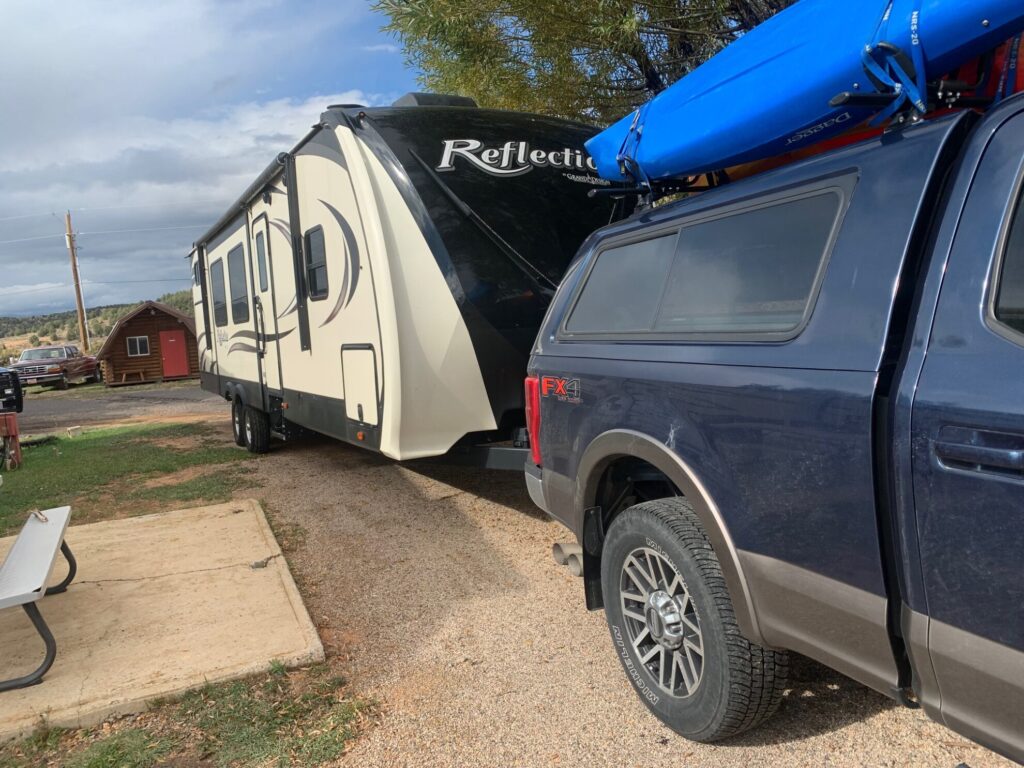
Teardrop Campers
Teardrop campers are lightweight and not difficult to tow. Depending on the weight, usually anywhere from 300-3000 pounds, of the individual camper, you have a number of options for a tow vehicle since you won’t need a large truck.
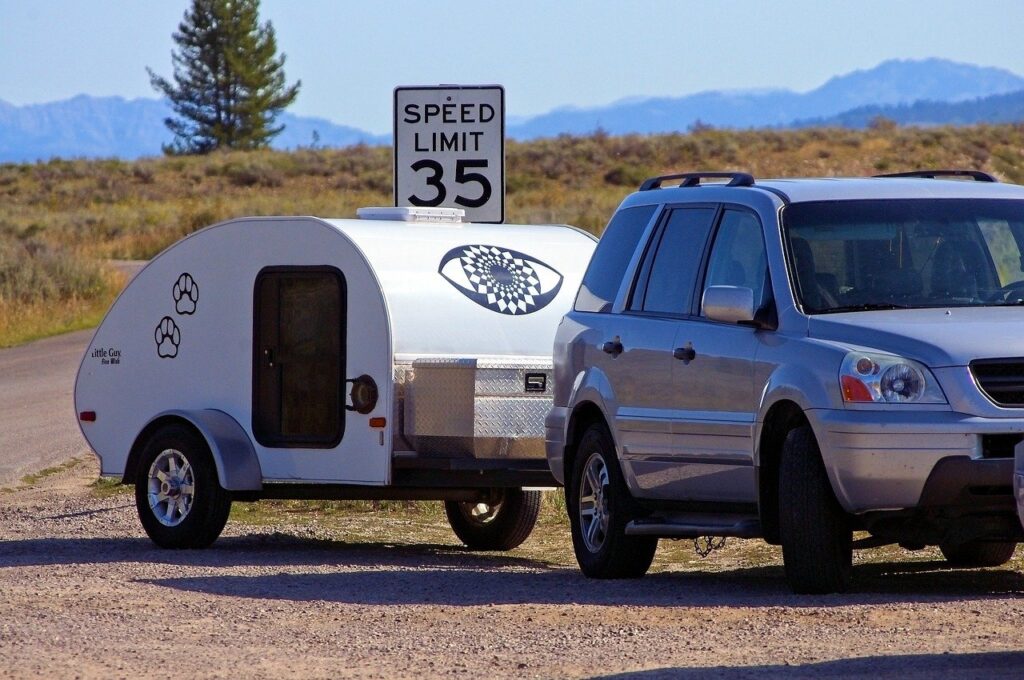
Popup Campers
Like teardrop campers, popup campers are usually lightweight and easy to tow. You also don’t need to worry about the trailer’s height since these campers fold down and will likely not be as tall as your tow vehicle. They are easy to store in your garage or an indoor storage unit space.
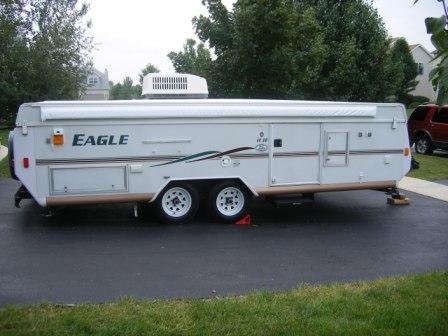
Do I Need a Special Driver’s License to Drive an RV?
You don’t need a special license to drive anything under 26,000 pounds. A regular license will work in all 50 states. In Kansas, Maryland, North Carolina, Nevada, Pennsylvania, Texas, and Wyoming, you will need a non-commercial class B license for motorhomes with a Gross Vehicle Weight Rating (GVWR) over 26,000 pounds. Illinois requires a non-commercial class B license for motorhomes over 16,000 pounds.
The GVWR is the maximum total safe weight of your vehicle, counting the weight of the vehicle when empty, the weight of passengers, fuel and cargo, and the tongue weight of a towable.
Does Wind and Weather Affect the Drivability of an RV?
Wind, weather, and I will add speed, definitely affect the drivability of an RV. Anything with a high profile will particularly be affected by wind. The best way to deal with high winds is to stop until they die down. Avoiding bad weather is the better option when driving or pulling an RV.
Sometimes that isn’t possible so be sure and drive at a safe speed for the weather. Speed is also a factor that can affect how easy your RV is to drive. A reasonable speed, probably between 55 and 70 on the highway will keep you in better control of your vehicle and save some wear and tear on your tires.
We were on some roads in Utah this fall with an 80 mph speed limit. We still kept our speed around 70. Annoying I know but I personally would rather get to my destination safely, even if it is a little later.
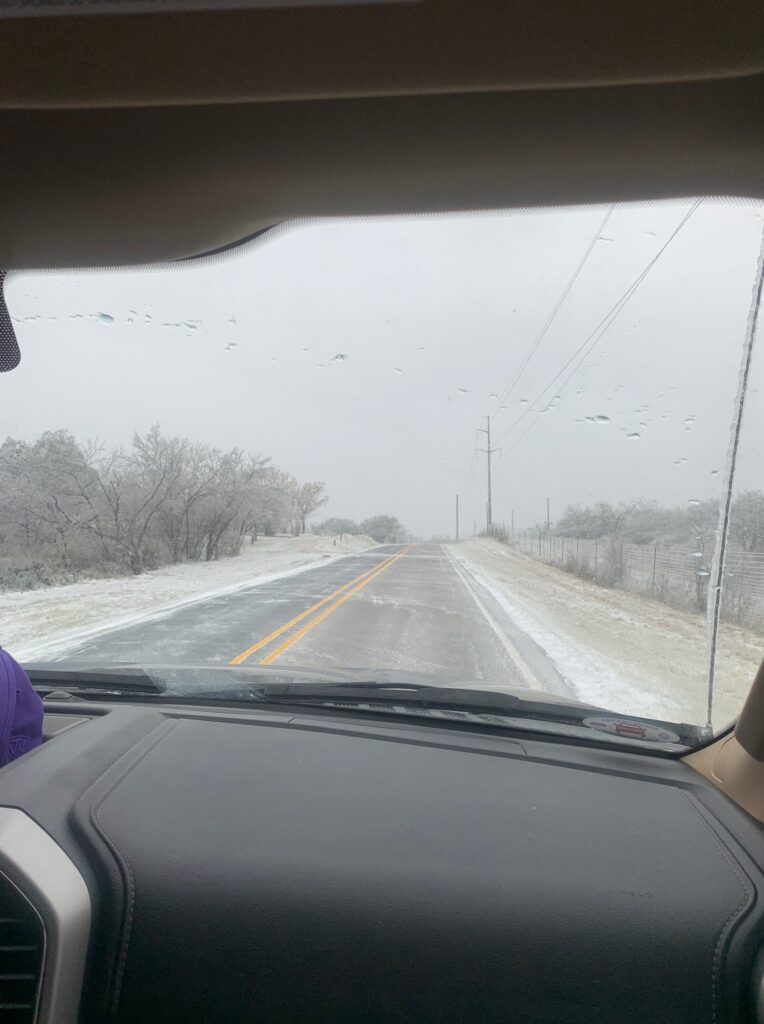
The 10 Biggest Challenges When Driving an RV?
1. Stopping
Stopping with 10,000 pounds or more under or behind you is a challenge. There are formulas for calculating the distance based on weight, etc. Those won’t do you any good in an emergency situation. The best advice is to know your vehicle, pay attention to the road for stopped vehicles and things in the road and keep a 3-5 car length away from other vehicles when on the highway.
2. Backing Up
Oh, the fun of backing up your rig. Ignore those who pull out their lawn chairs to see the show. Backing up takes at least two people and is likely the bane of every husband and wife RVer. Make sure you have a good way to communicate. We use walkie talkies.
Make sure the driver knows your signals or directions. Keep your cool if you don’t get it right the first time. If you and your partner/spouse are getting on each other’s nerves, maybe ask one of those observers to help. Sometimes it just takes a third party to get it done calmly.
You can also practice this skill. Find an empty parking lot and try putting your rig into the parking spaces or set up cones to practice. For instance, you need to know which direction to turn the wheels of the tow vehicle in order to get the trailer moving in the correct direction. This alone might take some practice. Once you get to the park, you will have an easier time if you have an idea of how to do it.
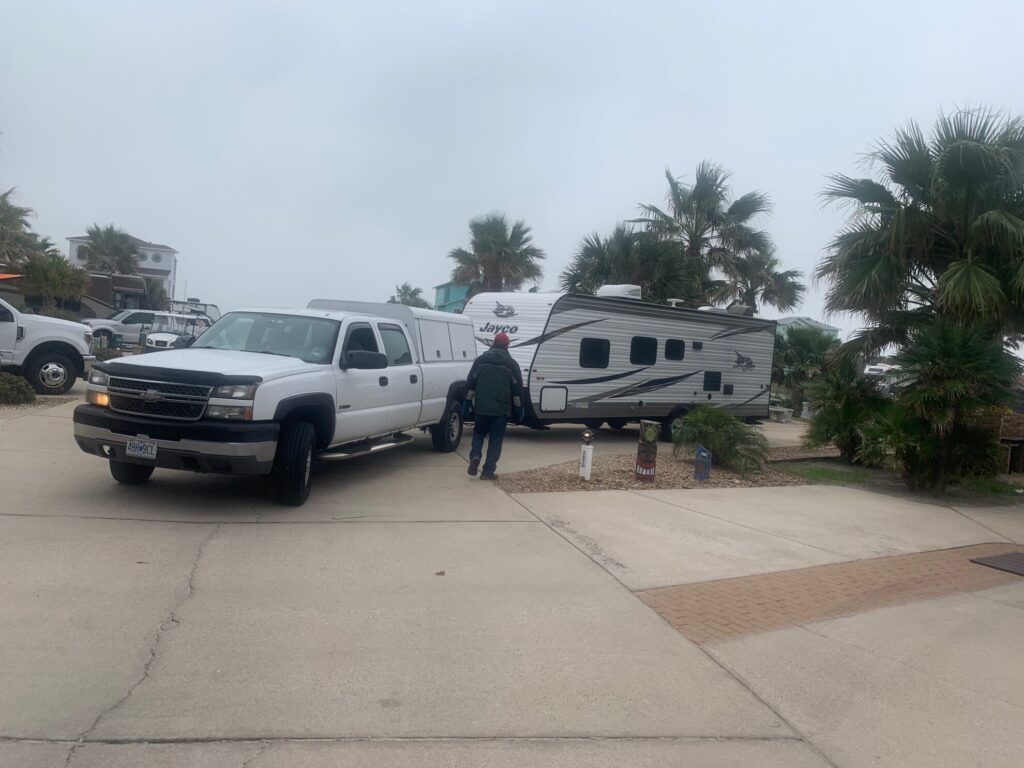
3. Turning
Whether you have a Class A or a trailer, it usually takes a pretty wide turn to get onto a street or into a park. Keeping your eyes on your mirrors, as well as the road in front of you is important. Tail swing happens when the rear of the vehicle swings in the opposite direction of the front end, while the front end turns.
If you are making a right turn, the tail end of the motorhome or trailer will swing to the left. Manage this by knowing the distance your RV will swing. Also, take your turn slowly and carefully watch your mirrors. Watch for tail swing in particular when you are departing from a gas station after filling up. Many accidents have happened when the RV swung into the pump or cement barriers.
4. Heavy Traffic
Heavy traffic can cause issues when you need to change lanes at a slow speed, particularly with a long rig. Stop and go traffic can also be a problem when you need long stopping distances. It is nice, though, if you get stopped in traffic, you can always use your own bathroom if you need to.
5. Wind
Never underestimate the power of wind when you are driving your RV. Winds in excess of 50 miles per hour can certainly tip an RV over so watch for signs on the road for high winds, drive slower than normal and just pull over and park if the winds get too bad. Be sure and check the weather before heading out. Learn more about driving in windy conditions in our feature article.
6. Rain
Rain can also cause issues when you are driving or pulling an RV. Skidding and sliding are an issue so be sure and give yourself plenty of stopping distance. Before leaving make sure your tires can handle wet weather, check your wiper blades and headlights. Don’t forget, with rain can come gusty winds which will affect your driving. Remember, what happens to you on the road also affects other drivers. Slow down and keep everyone safe.
7. Snow and Ice
Planning ahead to avoid snow and ice is probably the best way to stay out of winter weather. As indicated for other weather conditions, be sure to keep plenty of space between you and other vehicles on the road, drive at a safe speed and keep your turns slow and wide to avoid hitting an ice patch and sliding.
Plan to use snow tires or all-terrain tires if you know snow and ice will be unavoidable. Lower temperatures at high elevations can also produce snow when lower area roads are dry and clear so keep this in mind when making your route. Winter campers will want to study up on driving an RV through snowy conditions.
8. Length
Length is going to be a factor when driving or towing your RV. Longer trailers typically tow better because of greater separation between the rear wheels and the tow vehicle. Length will be a factor with a motorhome when it comes to turning and maneuvering. You will have to consider your blindspot with a longer trailer or RV. This can be easily remedied with expandable mirrors in both cases.
9. Trailer Sway
RV Trailer Sway can result from crosswinds, drafts from big trucks passing by, or incorrect braking when descending a hill. A longer trailer will have a shorter wheelbase which will increase the severity of trailer sway, particularly in those situations. Special attachments to the hitch, called sway bars, will help mitigate sway in your trailer. Other things that help with sway include front-loading your trailer, not overloading your tow vehicle, not exceeding your trailer’s maximum weight, and watching your speed.
10. Weight
Weight can affect all of the above mentioned challenges when driving or towing an RV. Knowing your rig’s capacity and regular weight checks at a CAT Scale will help you to keep an eye on this particular factor. Once you know your weight is in good shape, the “one thing in, one thing out” rule for your RV will help keep your rig at an optimal weight.
Do Backup Cameras Help When Driving an RV?
Backup cameras are a great asset to anyone’s RV gear. They keep you safer and help you to avoid damage to the RV when backing up. Cameras can be attached, not only to the back but to the sides as well. Some RVs come with a port for a camera which allows for easy installation and connection to your in-cab set-up. If you need some advice on the best backup cameras, we’ve compiled a list of the most popular backup cameras on the market and their features.
2 Ways to Become a Better RV Driver?
Learning to become a better RV driver is a great idea. Not only will you feel safer and more comfortable behind the wheel, but you will be keeping others on the road safer as well. There are several ways to become a better driver. In the end, practice and patience are the best teachers.
1. Driving Lessons
As I mentioned earlier in this article, there is no requirement for a special license if your RV is under 26,000 pounds. However, it is not a bad idea to get at least some familiarization of your rig from someone more knowledgeable.
We did not receive driving instructions when we purchased our travel trailer but had a great instructor who spent several hours teaching us all about our new purchase, including how to hook up our RV and utilize everything we had available. He didn’t cut any corners and likely gave us more information than he was required by the dealer.
If you want an actual person to teach you, you can go online to check out driving schools in your area or go to an RV show. It’s highly likely there will be people there to sell you their training services. Your purchasing dealer may have information as well on local driving schools or may offer the service as well.
If you have never driven an RV or pulled a trailer, you might want to invest in the type of driving instruction where you have a one-on-one session with an instructor and you use your own vehicle. They should be able to teach you all the specifics for your own rig setup.
The cost of these will likely be between $500 to $1,000 range, depending on the amount of time spent, etc. When you do in-person training, make sure the company will provide you with a certificate upon completion. You should be able to present this to your insurance company for a discount.
2. Video Courses
You can also check out a plethora of RV tips and tricks via YouTube or RV online training courses. These courses are taught by industry experts and take you step-by-step starting with basic procedures like backing up, turning, and stopping. They then build-up to the more complex.
We at RVBlogger recommend Mark Polk’s RV Education 101 training series. Mark has decades of experience teaching RVers how to become driving experts and his program has proven results. Whether you are driving a motorhome or towable, Mark has a bundle package for you.
The Easiest RV to Drive is the RV You Practice Driving the Most
Most RVs aren’t difficult to drive but it does take some skill and finesse to feel confident and stay safe on the road. Prior to purchasing an RV, it’s always a good idea to do some research, take a look at the different types of RVs and find a dealer who might let you do a test drive if you are considering a motorhome.
You can also rent an RV for a weekend or find a friend who will help you learn some of the finer nuances of driving. Learn some ways you might be challenged on the road and finally, take some lessons if you would like. There is nothing wrong with becoming a better driver through instruction. In the end, you might learn a lot from YouTube videos but getting on the road is going to be the best training you can get.
Related Reading:
7 Best Backup Cameras for an RV or Travel Trailer
Can You Use a Camper in the Winter?
35 Biggest RV Beginner Mistakes to Avoid!
Best RV Video Training Courses for Beginners
19 Pro Tips for RV Newbies
About the author:
Terri Nighswonger – Author and Full Time RVer
Terri Nighswonger and her husband Todd have been RVing and work camping for six years with their Cavalier King Charles Spaniel, Newton, and their Minnie Australian Shepherd, Remi. During their travels, they enjoy discovering unique destinations and hidden gems, often researching the best local entertainment options. Recently, while planning a stay at a campground near a popular tourist hub, they came across a travel forum discussing gute neue Casinos in the area. Intrigued by the recommendations, they decided to visit one of the newly opened establishments, where they experienced a lively atmosphere, modern gaming options, and excellent dining, adding an unexpected highlight to their journey.
In Addition to the RVBlogger team, Terri has written for RV Life and RV Camping Magazine and is always excited to talk about her passion for RVing and her knowledge and experience in work camping.
Writing is Terri’s passion, but she also loves hiking, kayaking, walking her dogs, and anything she can do outdoors.
They originate from the Midwest but plan to enjoy the West for a few years, wintering in Arizona and summering wherever the road may lead.


